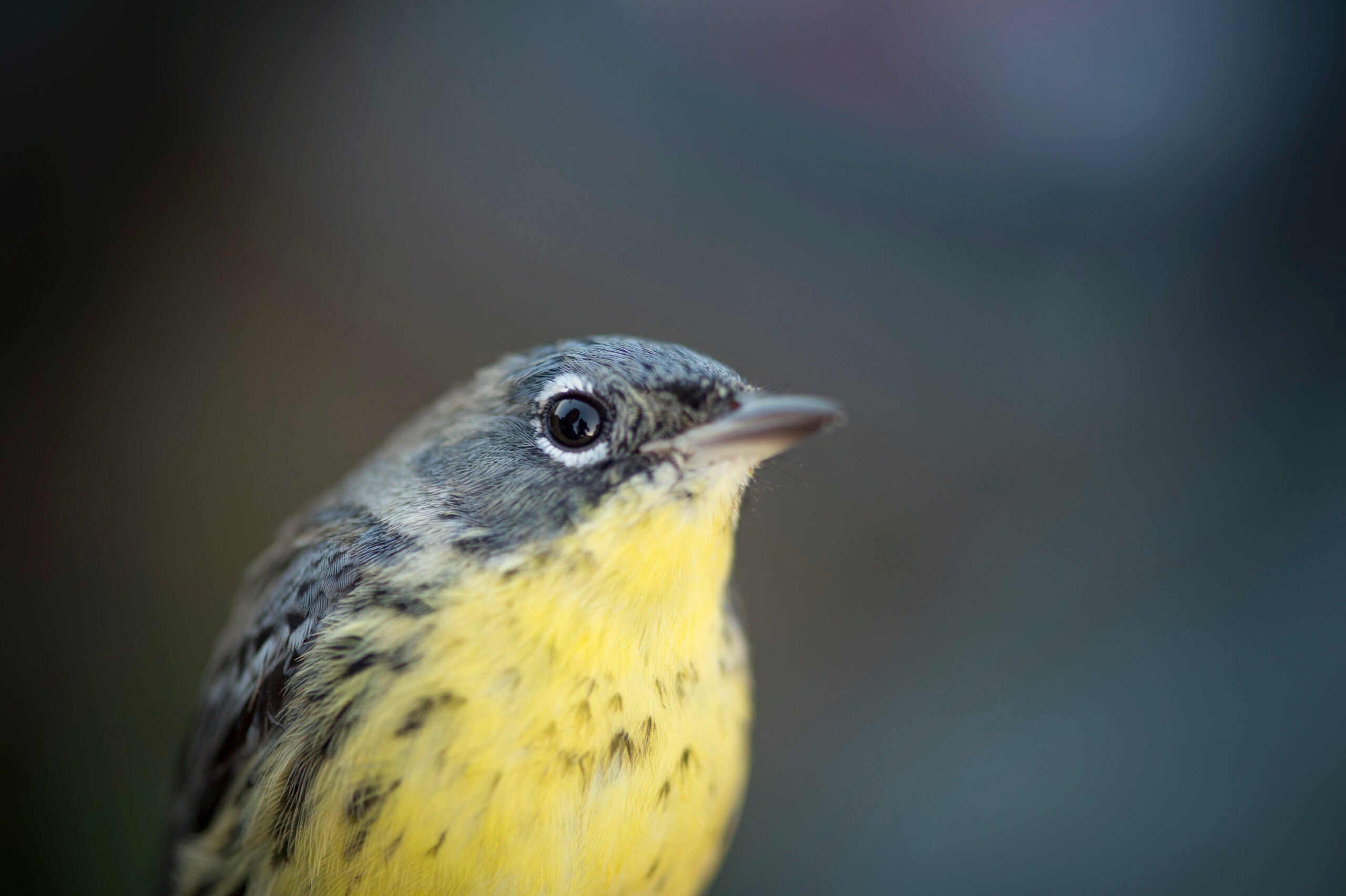Hidden Movements of Small Songbird Have Important Climate Change Implications
State-of-the-art tracking technology reveals previously unknown long-distance movements of Kirtland’s warblers during mating season that have important conservation and climate change implications for North American birds, according to a new study co-authored by a Georgetown professor.
In a new Current Biology article, senior author Peter Marra, director of the Georgetown Environment Initiative (GEI) and professor in the Department of Biology, found that some of the small songbirds, after completing their annual migration of over 1,700 miles, unexpectedly started moving long distances between breeding sites, at a time when most of them remain within their territories.
“This is a game-changer – the process of dispersal, or moving from one breeding site to another, has profound effects on a species’ ability to respond quickly to habitat loss and climate change,” says Peter Marra, also a scientist emeritus at the Smithsonian Migratory Bird Center (SMBC), whose researchers contributed to the study. “If long-distance dispersal is commonly informed through prospecting behaviors, scientists will need to rethink how they make predictions about how populations will adapt in the face of large-scale environmental change.”
Advancing Georgetown’s commitment to the environment and sustainability, GEI brings together students, faculty and staff from across disciplines such as the natural sciences, social sciences, humanities, public policy, law, medicine and business to deepen global understanding and transformation of the earth’s stewardship.
Going the Distance
Led by Nathan Cooper, Smithsonian researchers attached small radio tags to more than 100 Kirtland’s warblers in their Bahamas wintering grounds and then used a continent-wide network of automated telemetry receivers called the Motus Wildlife Tracking System to track their movements.
They discovered that the birds traveled surprisingly long distances during the breeding season.
After traveling from these wintering areas, the warblers arrived at their Michigan breeding grounds where each radio-tagged bird initially established one or more small territories.
A total of 11% of breeders and 60% of non-breeders, however, abandoned this common space use strategy and began moving long distances between three and 48 miles, often at night, between spatially isolated breeding areas.
“Discovering these hidden movements by Kirtland’s warblers challenges us to reshape how we think about animal movement,” said Smithsonian lead author Nathan Cooper. “As technology continues to improve, scientists will almost certainly detect similar long-distance movements in other bird species. If birds are moving farther than previously understood, we may not be conserving and protecting all the land area and habitats they require.”
Traditionally, scientists have thought that birds rarely leave their well-defended territories during the breeding season. But some birds that fail to attract a mate or those whose nests fail early in the season sometimes abandon their territories and begin moving more widely than the rest of the population.
Known as “floaters,” these birds typically move through the territories of other birds, presumably to find open territories and available mates.
Only one of the Kirtland’s warblers that moved long distances in this study, however, successfully bred later that season. This suggests either that mid-season mating opportunities are rare or that these birds had another purpose in mind, the study reports.
The authors say the frequency of long-distance movements peaked while other birds were feeding their nestlings and fledglings, which indicates that the transient birds may have moved in order to identify locations where other warblers successfully bred.
Previous work has shown that many animals “prospect” for information about where to breed, but this behavior has mostly been documented at short distances.
“Scientists have known about the existence of ‘floaters’ in bird populations for decades, but their secretive behavior and unpredictable patterns of movement make them challenging to capture and even more difficult to track,” the study asserts.
To determine how rare these long-distance movements might be, researchers combed through hundreds of previous studies and found that although movements outside of the territory appear to be common, Kirtland’s warblers moved significantly farther than other species. The farthest flying Kirtland’s warbler moved 48 miles, or more than 500 times the radius of an average territory, and nearly four times farther relative to territory size than any other species reviewed.
The US and Canada have lost nearly three billion birds since 1970, according to a study published in Science last year by the SMBC and several leading bird organizations.
“Understanding how, when, where and why birds move is one piece of the complex puzzle of understanding why birds are declining and how to conserve them for the future,” says Marra, also the senior author of the Science article.
Global Efforts
The SMBC is dedicated to understanding, conserving and championing the grand phenomenon of bird migration.
Founded in 1991, and part of the Smithsonian Conservation Biology Institute (SCBI), SMBC scientists work to conserve migratory species through research and public education that foster a better understanding of migratory birds and the need to protect diverse habitats across the Western Hemisphere.
SCBI plays a leading role in the Smithsonian’s global efforts to save wildlife species from extinction and train future generations of conservationists, spearhead research programs at its headquarters in Front Royal, Virginia, the Smithsonian’s National Zoo in Washington, D.C., and at field research stations and training sites worldwide.
-by Shelby Roller (G’19)
